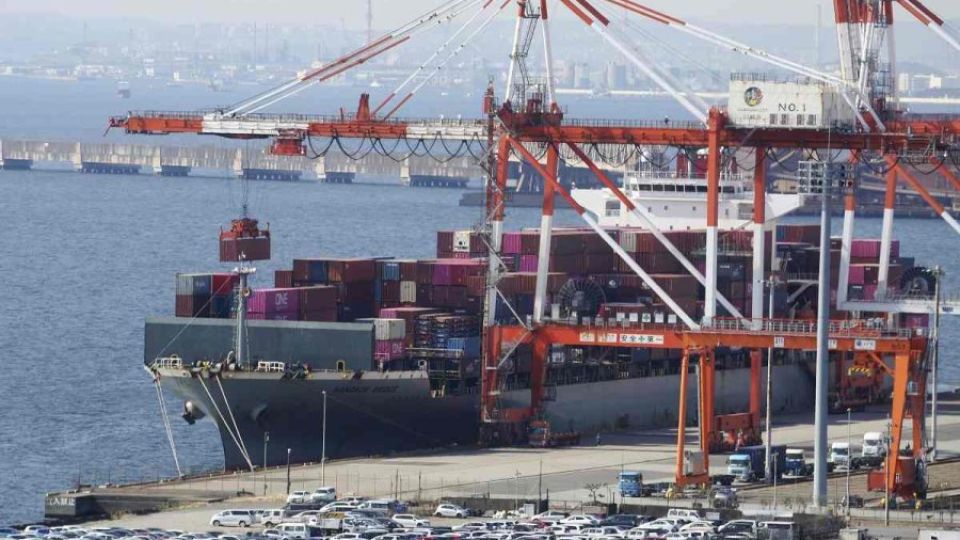February 25, 2025
TOKYO – Monday marked three years since Russia began its aggression against Ukraine. With economic sanctions against Moscow, mainly by the Group of Seven countries, still in place, Japan’s trade with Russia has shrunk drastically. However, Russia still makes up nearly 10% of Japan’s natural gas imports.
With a ceasefire in sight, businesses involved in Ukraine’s reconstruction are gradually mobilizing. Meanwhile in Japan, the rising prices triggered by the start of the aggression show no sign of abating.
According to trade statistics for 2024 released by the Finance Ministry, exports to Russia were down 17% year-on-year to ¥327.6 billion, and imports were down 17% to ¥860.3 billion. Compared to 2021, before the aggression started, exports were down about 40% and imports about 60%.
Due to the trade embargo imposed by G7 and other countries, Japan’s exports of such items as semiconductor-related manufacturing equipment, electronic components and aircraft have reached zero.
New car exports to Russia, which peaked at about 450,000 in 2008, were zero in both 2023 and 2024. Major companies such as Toyota Motor Corp. have already withdrawn from operations in Russia.
On the other hand, exports of secondhand compact cars, which are exempt from export restrictions, increased. In 2024, about 200,000 such vehicles were exported to Russia, an increase of around a third from the about 150,000 in 2021.
It is possible that Japanese cars, which are popular in Russia, are also being traded via third countries, creating a loophole in the sanctions.
subhead: Increasing LNG imports from U.S.
Liquefied natural gas (LNG) remains Japan’s most valuable import from Russia by far at ¥548 billion. Seafood such as crab, cod and salmon also amounted to ¥130.2 billion.
Even before Russia invaded, Japan relied on the country for about 10% of its LNG imports.
The Sakhalin-2 project, in which Japanese companies have stakes, is exempt from the sanctions for the time being, allowing Moscow to continue exporting LNG to Japan from Russia’s Far East.
“With the short transport distance and stable production, the importance of the Sakhalin-2 project has not changed,” said a major trading company executive.
Imports from the United States, which is strengthening its LNG production, have been on the rise. In 2024, the U.S. provided 9.6% of Japan’s LNG import, overtaking Russia at 8.6%. At the recent Japan-U.S. summit meeting, the two countries agreed to expand imports of U.S.-produced LNG, making it likely that Japan’s reliance on Russia will decline.
The United States, Europe and other countries are continuing to impose a ban on Russian financial institutions using SWIFT (Society for Worldwide Interbank Financial Telecommunication), one of the world’s largest international payment networks, making it difficult for Moscow to settle trade.
According to European media, the European Union is expected to soon officially decide to impose additional sanctions on several banks in Russia.
However, Russia has been countering the sanctions by establishing an original payment network known as SPFS (Financial Messaging System of the Bank of Russia) and increasing trades with China and India.
According to Anatoly Aksakov, head of the State Duma Committee on Financial Markets, new settlements methods have been already developed. “SWIFT is dying, it is already a backward technology,” Aksakov recently told Russia’s TASS news agency.

